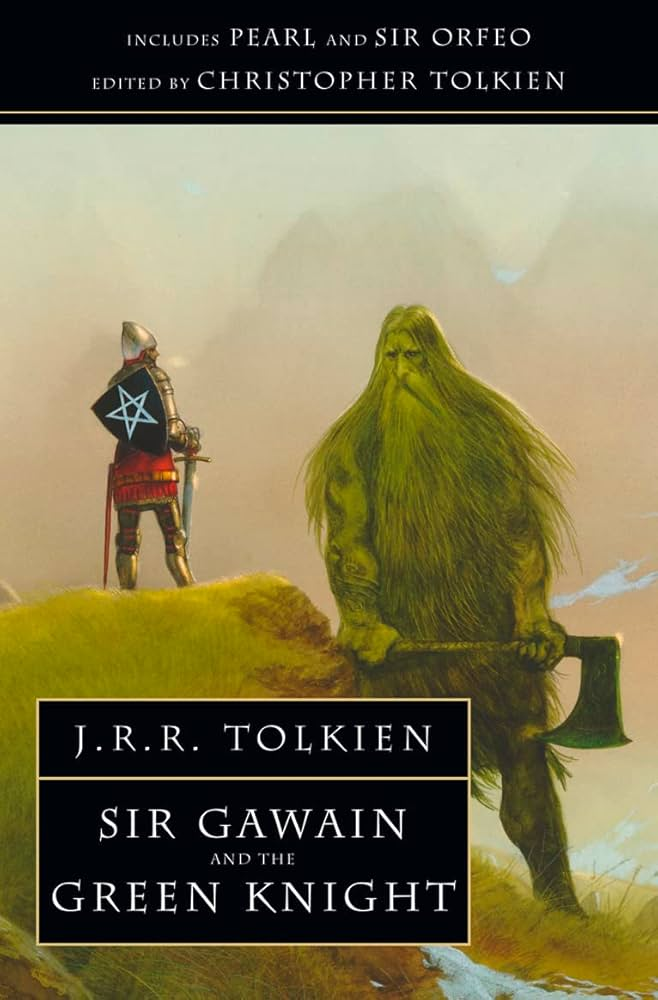Knights, castles and dragons make a compelling foundation on which writers can develop a human story. Films and television programs centered around this foundation (“Game of Thrones,” “Lord of the Rings,” etc.) are known for taking inspiration or, in some cases, making direct adaptations of classic medieval literary works. Medieval literature is known for heavy themes of chivalry, honor and truthfulness as the codes of knighthood. Knights aren’t around anymore though, so why do writers choose to adapt these works?
To help tackle this question, the main work of medieval literature I’d like to explore is “Sir Gawain and the Green Knight.” Which is the tale of Sir Gawain’s deadly wager with the mysterious green knight.
A green knight arrives at King Arthur’s court around Christmas time, offering a challenge: any knight may strike him with his green axe, but whoever does shall return in one year to give the Green Knight a chance to strike back. An overconfident Sir Gawain accepts this challenge and slices the knight’s head clean off. The Green Knight, much to Gawain’s surprise, picks his decapitated head up off the ground and returns it to his body, ordering Gawain to meet him in a year’s time. What follows is a tale of honor, chivalry and romance as Sir Gawain embarks on his quest to re-encounter the Green Knight, testing his knighthood along the way.
Season 10, Episode 5 of Cartoon Network’s “Adventure Time,” titled “Seventeen,” creatively adapts this work into a deadly challenge for its hero, Finn the Human. A green knight arrives on Finn’s 17th birthday, offering him the same wager Sir Gawain was presented with, a strike for a strike. Finn willingly accepts, leading to a direct re-telling of Sir Gawain’s dilemma. Finn’s overconfidence puts him in grave danger, and he barely escapes the knight’s return blow in the end. At the episode’s close, Finn laments over his foolish actions and questions his maturity.
Why would “Adventure Time,” the mystical, bizarre kid’s show, choose the tale of Sir Gawain as the outline for this episode? It’s simple: Finn has been portrayed as a righteous kid throughout the show, and the green knight helps to challenge Finn’s knight-like confidence. This episode highlights that Finn isn’t perfect and his childlike recklessness won’t work for him anymore, adding an entirely new dimension to his character and teaching an audience that maturing is a hard-fought battle.
A direct adaptation of Sir Gawain’s tale exists in A24’s 2021 film, “The Green Knight.” The film retells the poem in a fantastical, cinematic style while subverting expectations of the story’s ending.
In the original poem, Sir Gawain uses a green girdle that protects him from harm, which he dishonestly keeps to himself, though he is obligated to hand it over to a lord he made a wager with. The girdle helps him survive the return blow of the Green Knight. At the end of the poem, Sir Gawain is celebrated by King Arthur’s court but laments his sin of keeping the girdle and feels guitly about it.
The movie instead subverts the ending of the story by playing out a mishmash montage of the original ending in Sir Gawain’s head, then cutting back to Sir Gawain in the moment of the Green Knight’s returning blow. In a moment of realization, Sir Gawain removes the girdle and tells the Green Knight to strike him, accepting his mortal fate.
One may wonder the purpose of changing Sir Gawain’s ending. It is to help re-emphasize the themes of the poem to convey why Medieval knightswere held to such a high standard. While the original story found Sir Gawain lamenting over his dishonesty, “The Green Knight” teaches an audience about righteousness in the face of death, producing an electrifying ending that would leave a viewer feeling empowered over the peace that honesty brings Sir Gawain.
The many adaptations of “Sir Gawain and The Green Knight” effectively use their source material to challenge the confidence and honesty of their heroes, which are themes that resonate heavily with audiences today, creating inspiring, thought-provoking stories.








